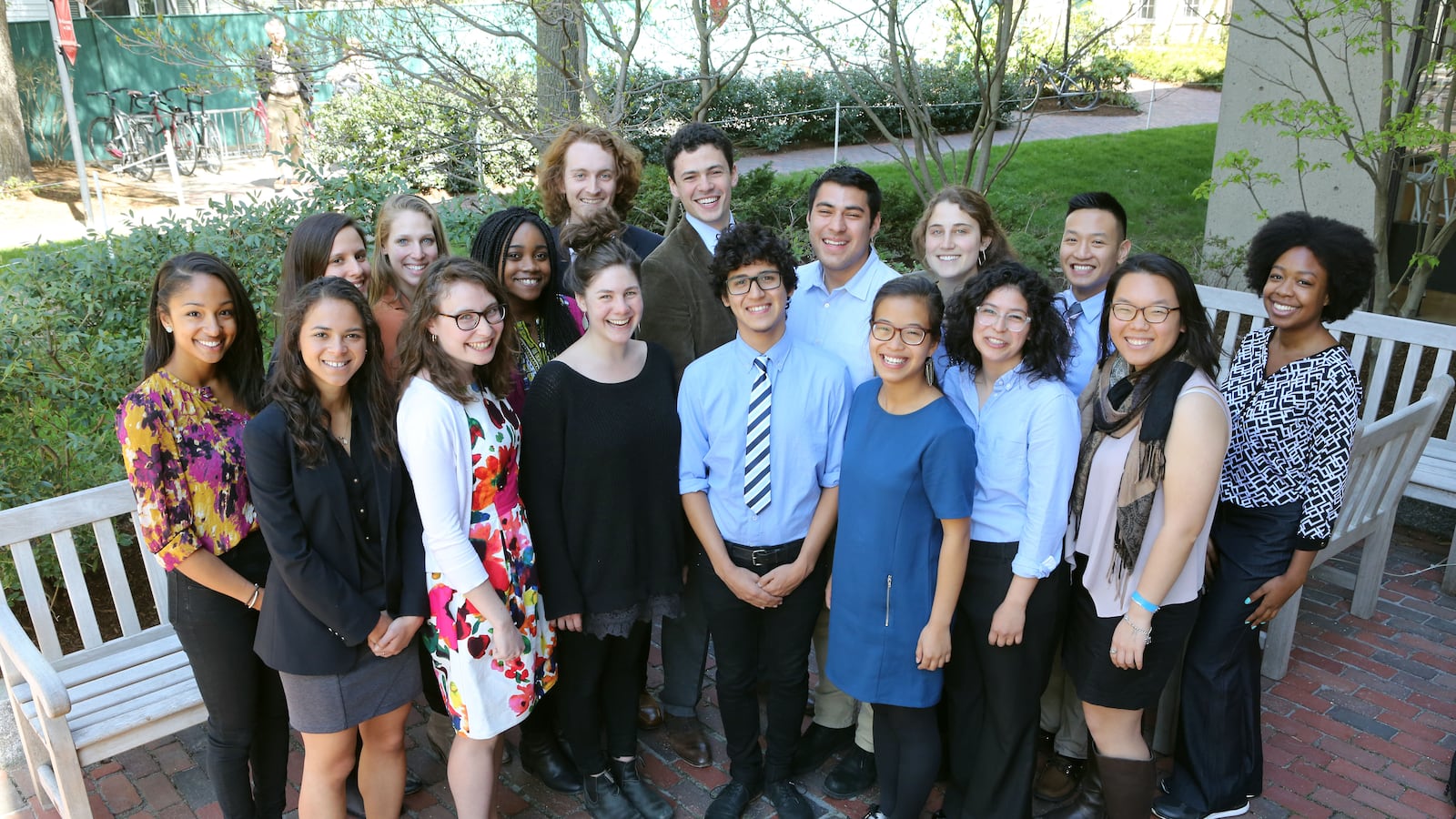When Kia Turner began college, she didn’t plan on a career as a public school teacher.
“I came into college thinking I was going to go into corporate law,” said 22-year-old Turner, who graduated from Harvard this spring. But after working at an afterschool program, “I kind of realized I wanted to spend my time working for kids.”
So instead of heading to law school this fall, she’ll be teaching constitutional law to a group of tenth-graders at Brooklyn’s Urban Assembly School for Law and Justice, one of eight recent Harvard graduates who will step into New York City classrooms as part of a new teacher preparation program launching this year.
That program, Harvard Teacher Fellows, is an attempt to reshape the way young teachers are trained to enter high-needs schools, and avoid pitfalls associated with asking inexperienced teachers to quickly take on the responsibilities of seasoned educators.
While there are similar teacher preparation models around the country that offer individualized support as new teachers learn the ropes — often called “residencies” — the fellowship’s leaders hope it could be replicated across the country, potentially offering education schools a way to reinvent themselves as enrollment slides.
“Nationwide, we’re in a teacher shortage, especially quality teachers,” said Eric Shed, the program’s director. “We really want to impact the field of teacher preparation.”
The fellowship is different from university models that include some student teaching, and programs like Teach For America, largely because fellows are eased into the profession and given significant mentorship and support as they acclimate to the classroom, according to Shed. During their first year, for instance, they are only expected to teach two or three classes each day after completing seven months of initial training and coursework. Once the training ends, fellows are expected to stay in high-needs classrooms for four to seven years.
Teach for America, by contrast, which was launched in 1989, offers five weeks of training and requests a two-year commitment from teachers. TFA has been criticized in the past for contributing to high teacher turnover at struggling schools, though the organization has said its members have access to coaches and online support — and most of its alumni stay in the field.
Shed believes Harvard’s additional training and longer teaching commitment set it apart from other programs. He added that fellows are only sent to schools “where the administration [and] school culture is one that really supports and grows teachers.”
Harvard’s approach is supported by research that shows similar models may boost student outcomes and reduce teacher turnover, which can be a critical problem at struggling schools.
“There’s often a disconnect in what fellows learn in schools and what they experience in the classroom,” Shed said of more traditional university teacher preparation models, which can thrust recent graduates into the job without sufficient practice and feedback. “It’s like drinking from a firehose,” he said.
At Harvard, the participating fellows begin with a teaching methods class in the spring of their senior year, coursework that continues through the summer while they spend some time teaching in a public school under a mentor’s supervision. Once they arrive at their school placement this fall, fellows work with an on-site mentor in addition to their Harvard mentor while completing additional online coursework.
That level of training and support is partly what convinced Turner to apply for the program. “When we’re planning our lessons and run into difficulties in the classroom, I have about six or seven people I can go to,” Turner said. “I can’t even imagine what it would be like if I were in a program like Teach For America.”
After their first year, fellows return to campus for a second summer’s worth of classes and practice teaching, and can work toward a master’s degree at a reduced price, an incentive that some participants described as a big draw.
The program is starting small: 18 fellows are participating this year, free of charge, and will receive a partial salary from their placement schools along with a stipend from the program, which is supported by $18 million in private contributions. By contrast, about 6,000 New York City teachers will start this fall, officials said, including 1,150 through the city’s own teaching fellowship, which includes a summer of training followed by full-time teaching.
The Harvard fellows are headed to schools in the Bay Area and Denver — and in New York City, eight fellows will be spread across the Urban Assembly’s Schools for Law and Justice, and Applied Math and Science; Uncommon Preparatory Charter High School; and Leadership Prep Bedford Stuyvesant.
Harvard’s education school isn’t alone in its quest to rethink the way it trains teachers. New York University, for instance, has also started a program that will mix theory and practice and let students gradually gain teaching responsibility.
“Universities seem really open to making adjustments — that’s partly because nationwide enrollment in teacher training programs has plummeted” in favor of alternative certification programs, said Diana Turk, director of teacher education at NYU’s Steinhardt School, who noted that she is eager to see how effective the program becomes.
But absent large private contributions, questions loom about whether programs like Harvard’s can be scaled nationally — and who should pay for them.
“The [education] school was always the cash cow for the university,” Turk added. “That’s not the case anymore. They’re realizing they have to put money in teacher education if we want to do it well.”

